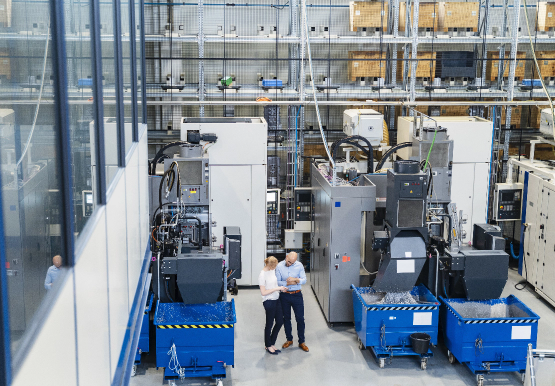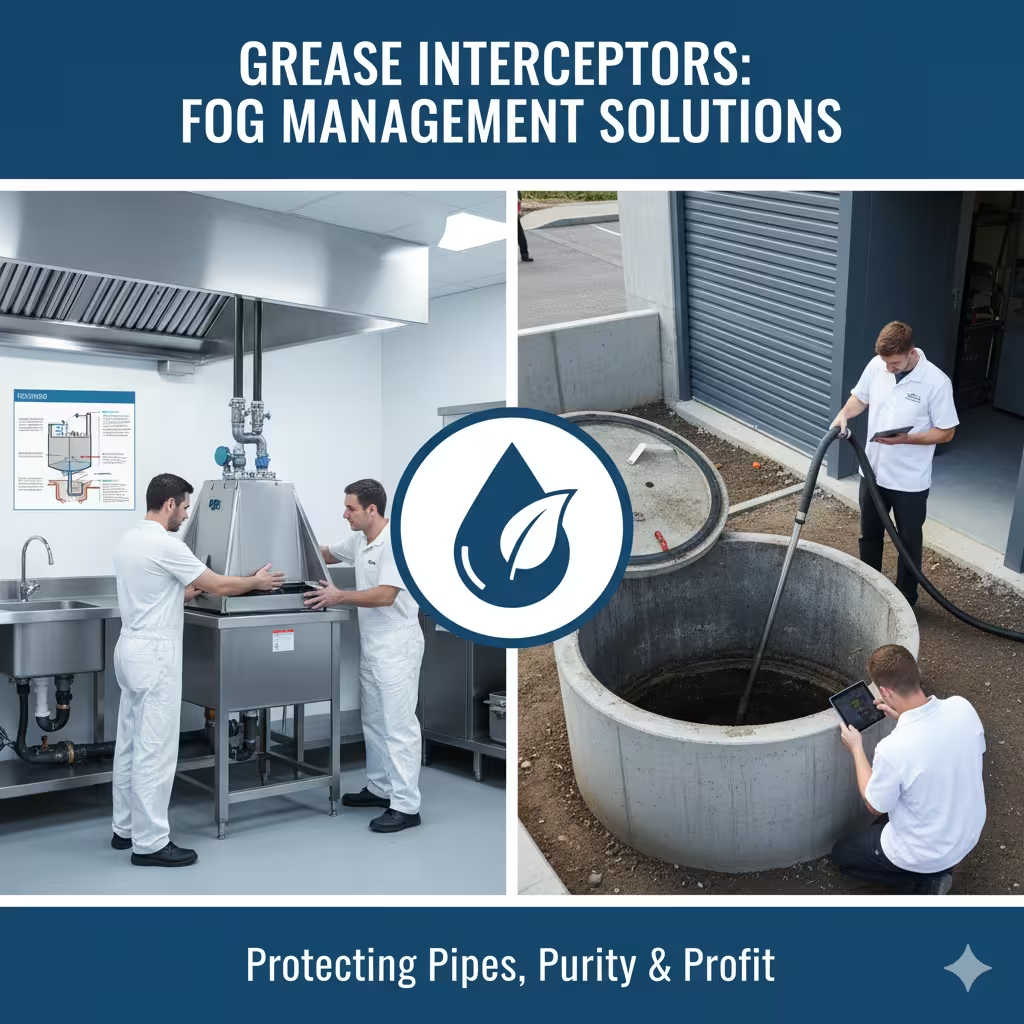GREASE INTERCEPTOR & DRAIN LINE TREATMENT
GREASE INTERCEPTOR & DRAIN LINE TREATMENT: YOUR FOG SOLUTION
What Are Grease Interceptors?
Grease interceptors are devices designed to trap and separate fats, oils, and grease from wastewater before they enter the sewer system. These interceptors work by allowing wastewater to cool and separate the grease, which floats to the top, while the cleaner water passes through the system. The grease is then collected for proper disposal, preventing the clogging of pipes and sewage lines.
For commercial establishments like restaurants, cafeterias, and food processing plants, grease interceptors are mandatory for compliance with local plumbing and environmental regulations. Installing and maintaining a grease interceptor is the first line of defense against FOG-related issues.
WHY GREASE INTERCEPTORS ARE IMPORTANT?
Prevent Blockages: FOG buildup in pipes is one of the leading causes of blockages in drainage systems. Without an effective grease interceptor, FOG can solidify in drain lines, leading to clogs, slow drainage, and expensive plumbing repairs.
Environmental Protection: Improper disposal of FOG can lead to contamination of local water systems. Grease interceptors help prevent this by capturing the grease before it can enter the wastewater treatment system, reducing environmental harm.
Compliance: Many local governments require businesses to install and maintain grease interceptors to comply with environmental and health regulations. Failing to do so can result in hefty fines and operational shutdowns.
Drain Line Treatments: A Complement to Grease Interceptors
While grease interceptors are highly effective, they are just one part of the FOG solution. Drain line treatments provide additional support by breaking down the grease and oils that may still accumulate in pipes, even with an interceptor in place. These treatments typically involve enzymatic or bacterial-based cleaners that help dissolve FOG, making it easier to remove and preventing buildup.
Enzymatic Drain Line Treatments: These treatments use enzymes to break down organic waste, including FOG. They work by liquefying grease, allowing it to flow more easily through the system without clogging pipes.
Bacterial Drain Line Treatments: Bacteria-based cleaners contain beneficial microorganisms that consume grease, oils, and fats. These treatments naturally digest FOG, breaking it down into harmless byproducts, and they continue working even after the treatment is applied.
Chemical Solutions: While less eco-friendly than enzymatic or bacterial treatments, chemical drain cleaners are sometimes used in commercial settings for immediate and powerful results. However, they should be used sparingly, as they can be harsh on pipes and the environment.
ABOUT OUR COMPANY
COMPREHENSIVE FOG SOLUTION FOR COMMERCIAL & INDUSTRIAL SECTOR
Key Components of a Comprehensive FOG Solution:
-
FOG Prevention: Implementing measures to limit the amount of FOG entering the drainage system.
-
FOG Removal: Using specialized equipment and treatments to remove existing grease and oil buildup.
-
Ongoing Maintenance: Regular cleaning and servicing to ensure continued prevention of FOG accumulation.
-
Compliance Management: Ensuring that businesses adhere to local, state, and federal regulations related to FOG disposal.
-
Sustainable Disposal: Ensuring FOG is disposed of or recycled in an eco-friendly manner.

FOG REMOVAL: BREAKING DOWN & ELIMINATING BUILD-UP
Even with preventive measures in place, FOG can accumulate over time, leading to potential blockages. This is where FOG removal services come in, using a range of effective techniques to clear pipes and drains.
1. High-Pressure Water Jetting
-
This method involves using high-pressure water to clean pipes and remove FOG and debris. It is highly effective in clearing stubborn grease buildup that may not be removed through traditional cleaning methods.
-
Water jetting can also remove other materials, such as food particles and waste, ensuring that drains and sewer systems remain clear.
2. Enzyme-Based Treatments
-
Enzyme-based cleaners are a natural, eco-friendly option for breaking down FOG. These treatments use plant-based enzymes and microorganisms to digest fats, oils, and grease, turning them into simpler, biodegradable compounds.
-
These treatments are safe for both plumbing systems and the environment, and they continue to work over time, preventing future FOG buildup.
3. Mechanical Cleaning
-
In cases of severe FOG buildup, mechanical cleaning methods like augers or rotary cleaners may be used. These tools physically scrape away grease and oil from the inside of pipes, restoring proper flow.
SEAMLESS FOG Solutions MANAGEMENT– HOW WE WORK?
At FOG Control Solutions, we deliver seamless, customized FOG management programs built around your business’s unique needs. Our expert team takes the time to understand your specific challenges with Fats, Oils, and Grease (FOG), then designs a comprehensive plan using advanced technology and proven industry best practices. The results? Efficient, long-term solutions that keep your systems clean, compliant, and running smoothly.

